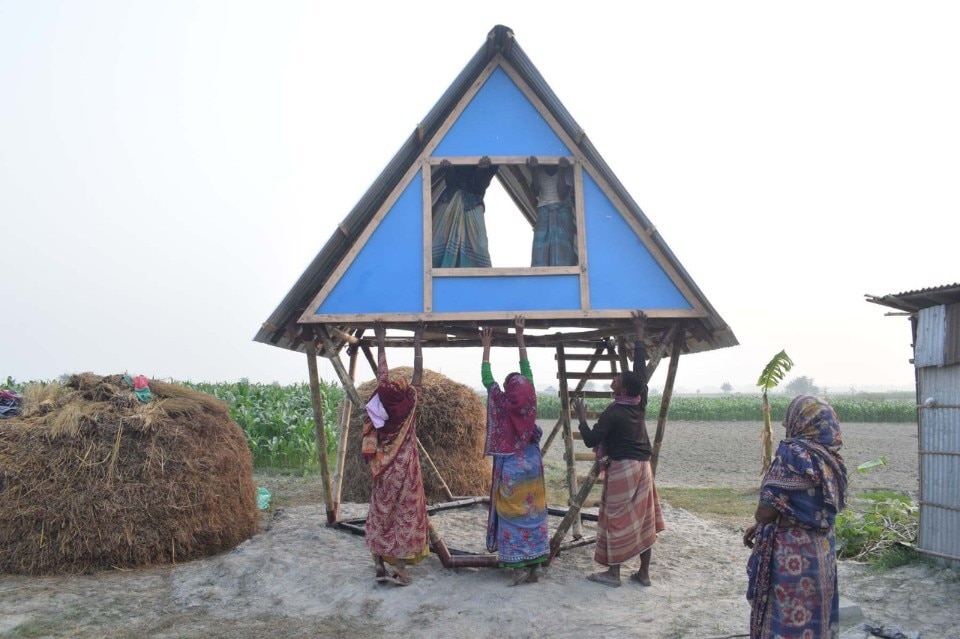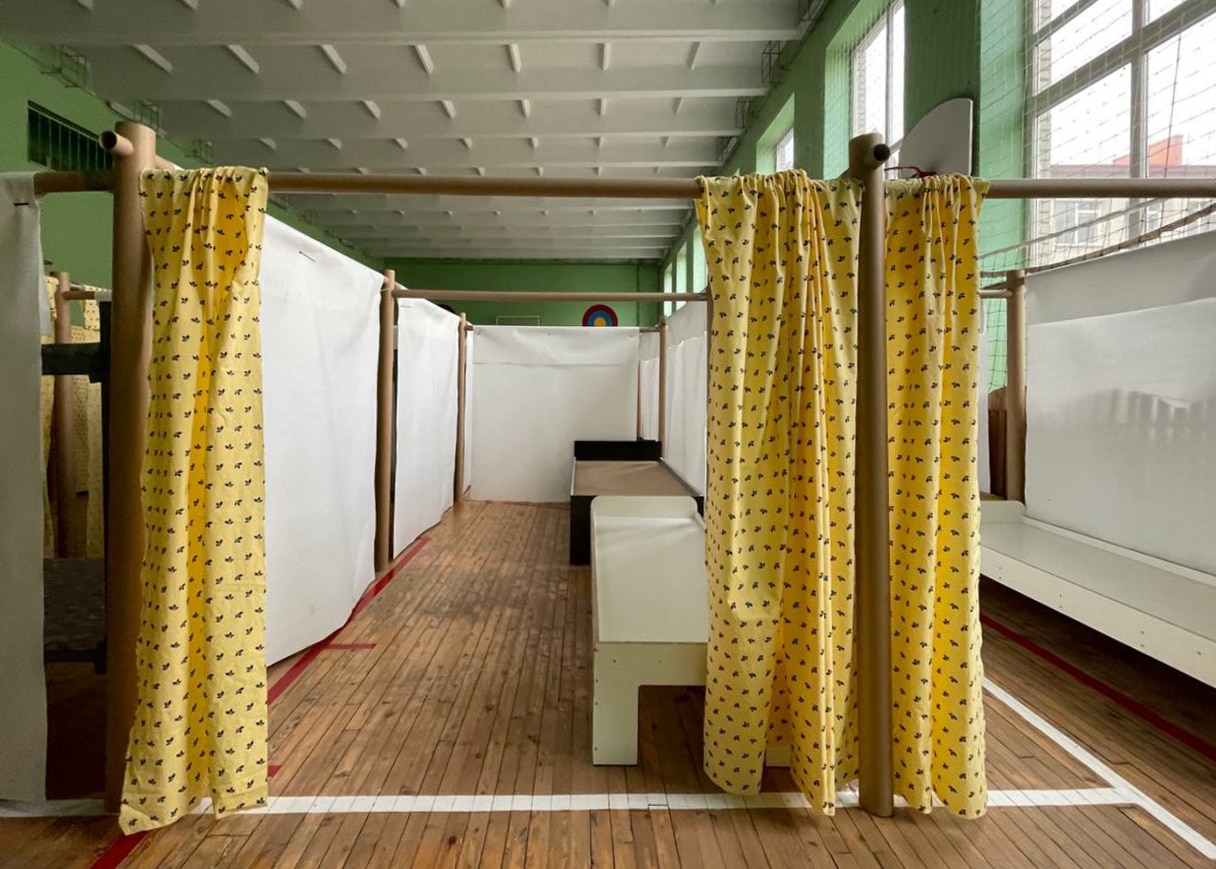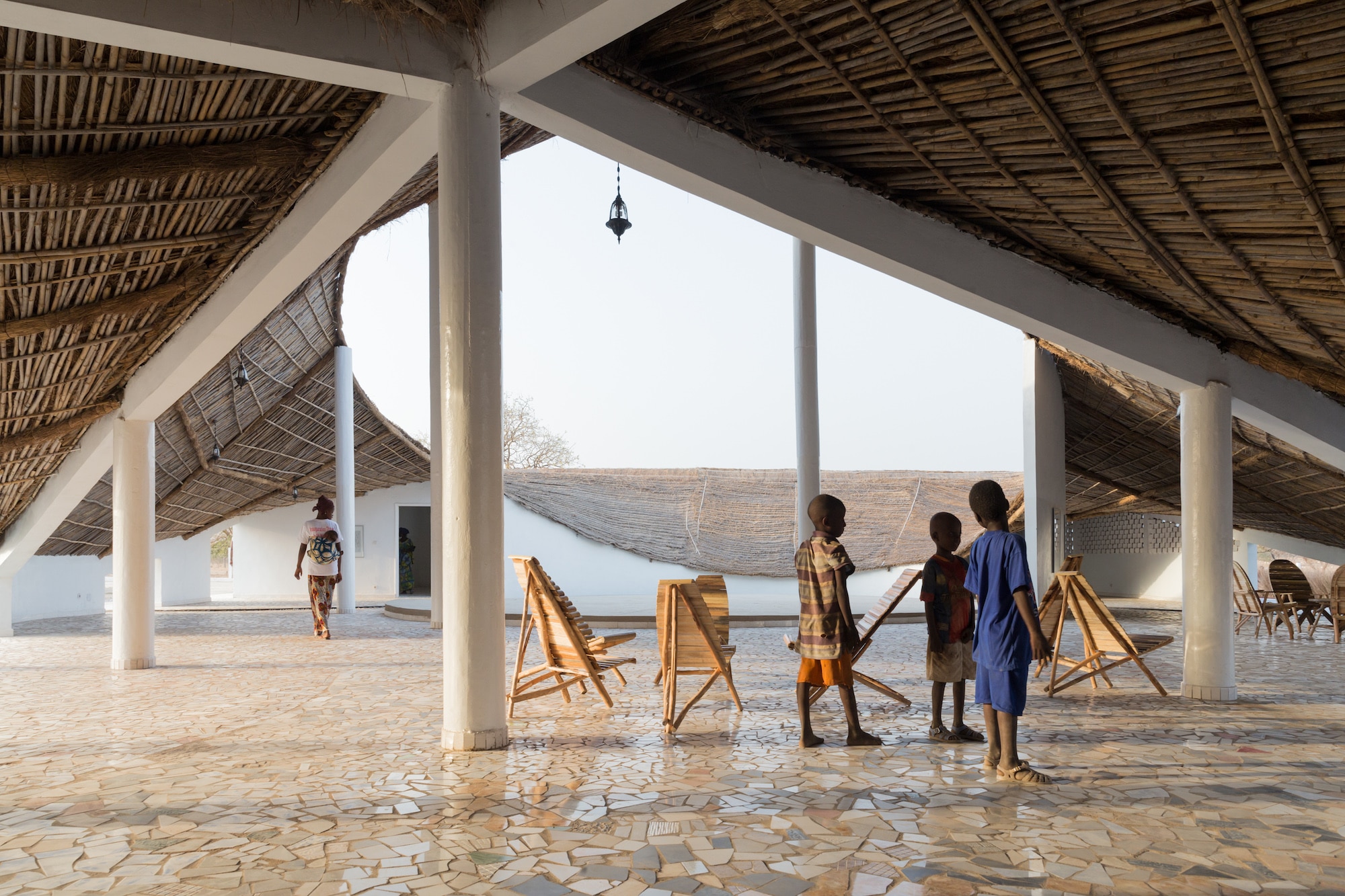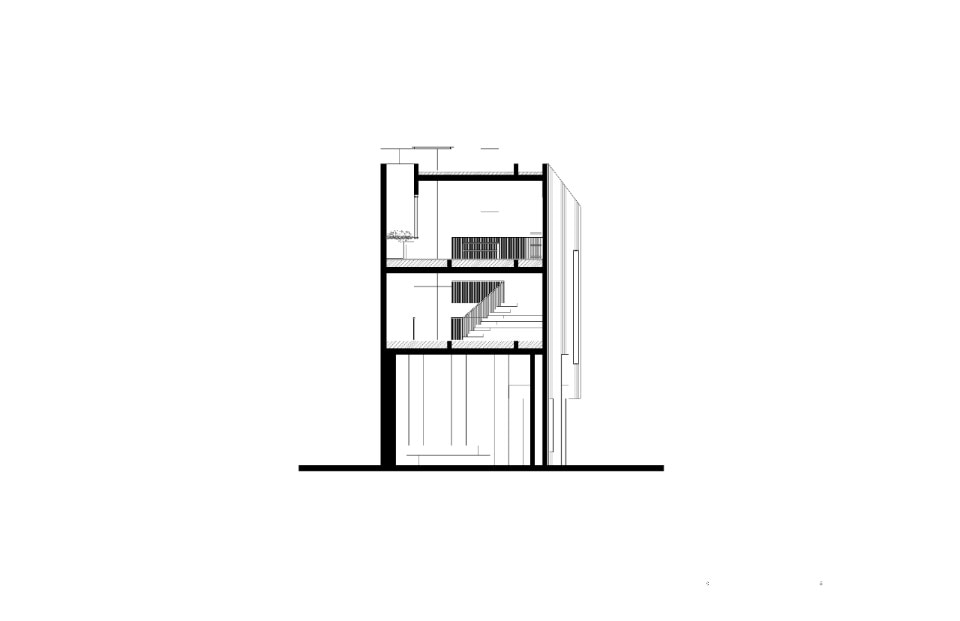We live in a constantly shifting world. The multiple crises we experience today, every day – climatic, financial, socio-economic and political – heighten our sense of instability. The impact is felt largely by underserved and marginalized communities. The abruptness of violent interruptions in our lives, as a consequence of these multiple critical situations, shows us that we are at a juncture where we need to rethink the fundamental assumptions of our cities. Cities are never static, they constantly evolve.
The idea of ‘temporal’ proposes that, instead of focusing on spaces and objects, we should turn our attention to ‘time’ as the other essential component making our lives and cities work.
Carlo Rovelli writes: “The entire evolution of science would suggest that the best grammar for thinking about the world is that of change, not of permanence. Not of being, but of becoming. We can think of the world as made up of things. Of substances. Of entities. Of something that is. Or we can think of it as made up of events. Of happenings. Of processes. Of something that occurs. Something that does not last and that undergoes continual transformation, that is not permanent in time”.

Challenging our thinking around mutability, adaptive potential and transformation possibility is essential. The idea of “temporal” proposes that, instead of focusing on spaces and objects, we should turn our attention to “time” as the other essential component making our lives and cities work. We are always in motion with time; the idea of “where” must be associated with “when”.
Thinking temporarily, can offer direct solutions to a current condition, or at other times become a planning strategy.
As Rahul Mehrotra shows us, if time became the focus of our city-building, we could unlock the potentials of architecture as an ephemeral medium and agent for urbanism. Thinking with the temporal promises to be a game changer if we are to survive in this world where disasters are increasing in number and frequency, and affecting a large proportion of humanity. Instead of focusing on shapes, forms and outlines, why not shift to the movements, events and processes? Thinking temporarily, can offer direct solutions to a current condition, or at other times become a planning strategy.
 View gallery
View gallery

WORKac + IUA Ignacio Urquiza Arquitectos, Pilares Lomas de Becerra community centre, Mexico City, 2022
All project materials © WORKac + IUA Ignacio Urquiza Arquitectos

WORKac + IUA Ignacio Urquiza Arquitectos, Pilares Lomas de Becerra community centre, Mexico City, 2022
All project materials © WORKac + IUA Ignacio Urquiza Arquitectos

WORKac + IUA Ignacio Urquiza Arquitectos, Pilares Lomas de Becerra community centre, Mexico City, 2022
All project materials © WORKac + IUA Ignacio Urquiza Arquitectos

WORKac + IUA Ignacio Urquiza Arquitectos, Pilares Lomas de Becerra community centre, Mexico City, 2022
All project materials © WORKac + IUA Ignacio Urquiza Arquitectos

WORKac + IUA Ignacio Urquiza Arquitectos, Pilares Lomas de Becerra community centre, Mexico City, 2022
All project materials © WORKac + IUA Ignacio Urquiza Arquitectos

WORKac + IUA Ignacio Urquiza Arquitectos, Pilares Lomas de Becerra community centre, Mexico City, 2022
All project materials © WORKac + IUA Ignacio Urquiza Arquitectos

WORKac + IUA Ignacio Urquiza Arquitectos, Pilares Lomas de Becerra community centre, Mexico City, 2022
All project materials © WORKac + IUA Ignacio Urquiza Arquitectos

WORKac + IUA Ignacio Urquiza Arquitectos, Pilares Lomas de Becerra community centre, Mexico City, 2022
All project materials © WORKac + IUA Ignacio Urquiza Arquitectos

WORKac + IUA Ignacio Urquiza Arquitectos, Pilares Lomas de Becerra community centre, Mexico City, 2022
All project materials © WORKac + IUA Ignacio Urquiza Arquitectos

WORKac + IUA Ignacio Urquiza Arquitectos, Pilares Lomas de Becerra community centre, Mexico City, 2022
All project materials © WORKac + IUA Ignacio Urquiza Arquitectos

WORKac + IUA Ignacio Urquiza Arquitectos, Pilares Lomas de Becerra community centre, Mexico City, 2022
All project materials © WORKac + IUA Ignacio Urquiza Arquitectos

WORKac + IUA Ignacio Urquiza Arquitectos, Pilares Lomas de Becerra community centre, Mexico City, 2022
All project materials © WORKac + IUA Ignacio Urquiza Arquitectos

WORKac + IUA Ignacio Urquiza Arquitectos, Pilares Lomas de Becerra community centre, Mexico City, 2022
All project materials © WORKac + IUA Ignacio Urquiza Arquitectos

WORKac + IUA Ignacio Urquiza Arquitectos, Pilares Lomas de Becerra community centre, Mexico City, 2022
All project materials © WORKac + IUA Ignacio Urquiza Arquitectos

WORKac + IUA Ignacio Urquiza Arquitectos, Pilares Lomas de Becerra community centre, Mexico City, 2022
All project materials © WORKac + IUA Ignacio Urquiza Arquitectos

WORKac + IUA Ignacio Urquiza Arquitectos, Pilares Lomas de Becerra community centre, Mexico City, 2022
All project materials © WORKac + IUA Ignacio Urquiza Arquitectos

WORKac + IUA Ignacio Urquiza Arquitectos, Pilares Lomas de Becerra community centre, Mexico City, 2022
All project materials © WORKac + IUA Ignacio Urquiza Arquitectos

WORKac + IUA Ignacio Urquiza Arquitectos, Pilares Lomas de Becerra community centre, Mexico City, 2022
All project materials © WORKac + IUA Ignacio Urquiza Arquitectos

WORKac + IUA Ignacio Urquiza Arquitectos, Pilares Lomas de Becerra community centre, Mexico City, 2022
All project materials © WORKac + IUA Ignacio Urquiza Arquitectos

WORKac + IUA Ignacio Urquiza Arquitectos, Pilares Lomas de Becerra community centre, Mexico City, 2022
All project materials © WORKac + IUA Ignacio Urquiza Arquitectos

WORKac + IUA Ignacio Urquiza Arquitectos, Pilares Lomas de Becerra community centre, Mexico City, 2022
All project materials © WORKac + IUA Ignacio Urquiza Arquitectos

WORKac + IUA Ignacio Urquiza Arquitectos, Pilares Lomas de Becerra community centre, Mexico City, 2022
All project materials © WORKac + IUA Ignacio Urquiza Arquitectos

WORKac + IUA Ignacio Urquiza Arquitectos, Pilares Lomas de Becerra community centre, Mexico City, 2022
All project materials © WORKac + IUA Ignacio Urquiza Arquitectos

WORKac + IUA Ignacio Urquiza Arquitectos, Pilares Lomas de Becerra community centre, Mexico City, 2022
All project materials © WORKac + IUA Ignacio Urquiza Arquitectos

WORKac + IUA Ignacio Urquiza Arquitectos, Pilares Lomas de Becerra community centre, Mexico City, 2022
All project materials © WORKac + IUA Ignacio Urquiza Arquitectos

WORKac + IUA Ignacio Urquiza Arquitectos, Pilares Lomas de Becerra community centre, Mexico City, 2022
All project materials © WORKac + IUA Ignacio Urquiza Arquitectos

WORKac + IUA Ignacio Urquiza Arquitectos, Pilares Lomas de Becerra community centre, Mexico City, 2022
All project materials © WORKac + IUA Ignacio Urquiza Arquitectos

WORKac + IUA Ignacio Urquiza Arquitectos, Pilares Lomas de Becerra community centre, Mexico City, 2022
All project materials © WORKac + IUA Ignacio Urquiza Arquitectos
The World Bank estimates the number of refugees globally rose to 35,5 million in 2022 - an increase of nearly 8 million from the previous year. This number has nearly tripled in a decade, and is increasing exponentially today due to conflicts in Ukraine, Israel and Palestine and elsewhere in the world.
Some examples of work of architects who are confronting this situation head-on include works by Marina Tabassum. Along with her non-profit, FACE, she is addressing the refugee crisis in Bangladesh for the persecuted community of the Rohingya, who were forced to migrate from Myanmar in massive numbers, making them one of the world’s largest stateless populations. She is also confronting the climate crisis of fragile communities in the delta to think about new typologies of housing that can survive increasing flooding.

 View gallery
View gallery

The partition system erected in Lviv and Kumamoto after the flooding that hit the island of Kyushu
First used to accommodate people who were displaced after the 1995 Kobe Earthquake, since 2022 the system has been deployed in the wake of Russia’s invasion of Ukraine. The structures have been built in Ukraine, Poland, Slovakia and France to provide greater privacy for war refugees.
Photos Voluntary Architects’ Network

The partition system erected in Lviv and Kumamoto after the flooding that hit the island of Kyushu
First used to accommodate people who were displaced after the 1995 Kobe Earthquake, since 2022 the system has been deployed in the wake of Russia’s invasion of Ukraine. The structures have been built in Ukraine, Poland, Slovakia and France to provide greater privacy for war refugees.
Photos Voluntary Architects’ Network

The partition system erected in Lviv and Kumamoto after the flooding that hit the island of Kyushu
First used to accommodate people who were displaced after the 1995 Kobe Earthquake, since 2022 the system has been deployed in the wake of Russia’s invasion of Ukraine. The structures have been built in Ukraine, Poland, Slovakia and France to provide greater privacy for war refugees.
Photos Voluntary Architects’ Network

The partition system erected in Lviv and Kumamoto after the flooding that hit the island of Kyushu
First used to accommodate people who were displaced after the 1995 Kobe Earthquake, since 2022 the system has been deployed in the wake of Russia’s invasion of Ukraine. The structures have been built in Ukraine, Poland, Slovakia and France to provide greater privacy for war refugees.
Photos Voluntary Architects’ Network

The partition system erected in Lviv and Kumamoto after the flooding that hit the island of Kyushu
First used to accommodate people who were displaced after the 1995 Kobe Earthquake, since 2022 the system has been deployed in the wake of Russia’s invasion of Ukraine. The structures have been built in Ukraine, Poland, Slovakia and France to provide greater privacy for war refugees.
Photos Voluntary Architects’ Network

The partition system erected in Lviv and Kumamoto after the flooding that hit the island of Kyushu
First used to accommodate people who were displaced after the 1995 Kobe Earthquake, since 2022 the system has been deployed in the wake of Russia’s invasion of Ukraine. The structures have been built in Ukraine, Poland, Slovakia and France to provide greater privacy for war refugees.
Photos Voluntary Architects’ Network

The partition system erected in Lviv and Kumamoto after the flooding that hit the island of Kyushu
First used to accommodate people who were displaced after the 1995 Kobe Earthquake, since 2022 the system has been deployed in the wake of Russia’s invasion of Ukraine. The structures have been built in Ukraine, Poland, Slovakia and France to provide greater privacy for war refugees.
Photos Voluntary Architects’ Network

The partition system erected in Lviv and Kumamoto after the flooding that hit the island of Kyushu
First used to accommodate people who were displaced after the 1995 Kobe Earthquake, since 2022 the system has been deployed in the wake of Russia’s invasion of Ukraine. The structures have been built in Ukraine, Poland, Slovakia and France to provide greater privacy for war refugees.
Photos Voluntary Architects’ Network
Shigeru Ban is working to alleviate the growing refugee crisis in Ukraine, designing and constructing shelters and partition systems to give privacy and respect. He’s also encouraging the timber industry in Ukraine’s municipalities, one of the largest in Europe, so that business can continue during the war and the industry can be ready for reconstruction.
Alejandro Saldarriaga’s temporary structures in Bogotá, Colombia, take inspiration from the Colombian literary tradition of magical realism to find emotional continuity in the sense of hope and dream at the height of pandemic instability. In Los Angeles, where the city is experiencing an exponential increase in migration, Michael Maltzan invites the community to inhabit the city’s new infrastructure. Mike Schlaich, a structural engineer in Germany, learns from collaboration with Christo on the temporary structure and proposes dismountable and relocatable stadium structures. In Ghana, DK Osseo-Asare is investigating alternative models to convert waste materials into new economic streams and build a new business platform and marketplace.

 View gallery
View gallery
We are constantly evolving physically and creatively, never stopping for a moment. Philosophers and scientists agree that time is continuous, and while it may be in different states and shapes, the idea of continuous time makes our physical world function.
In our short life on Earth, how we start to design in a way that is open to change, and how we appreciate and understand all of our existence as temporary, to leave the least footprint and live in harmony with nature, will have the greatest impacts on our lives and help us to navigate each new crisis that arises. We are all in a moment of “becoming”, together for the purpose of making a better common future that we can all share equally.

 View gallery
View gallery

Toshiko Mori Architect, Fass School and Teachers’ Residence, Fass, Senegal, 2019
Photo Iwan Baan

Toshiko Mori Architect, Fass School and Teachers’ Residence, Fass, Senegal, 2019
Photo Iwan Baan

Toshiko Mori Architect, Fass School and Teachers’ Residence, Fass, Senegal, 2019
View of the courtyard and exterior of the Fass School and Teachers’ Residence in Fass, with its distinctive undulating roof that facilitates the collection of rainwater
Photo Iwan Baan

Toshiko Mori Architect, Fass School and Teachers’ Residence, Fass, Senegal, 2019
View of the courtyard and exterior of the Fass School and Teachers’ Residence in Fass, with its distinctive undulating roof that facilitates the collection of rainwater
Photo Iwan Baan

Toshiko Mori Architect, Fass School and Teachers’ Residence, Fass, Senegal, 2019
View of the courtyard and exterior of the Fass School and Teachers’ Residence in Fass, with its distinctive undulating roof that facilitates the collection of rainwater
Photo Iwan Baan

Toshiko Mori Architect, Fass School and Teachers’ Residence, Fass, Senegal, 2019
Photo Iwan Baan

Toshiko Mori Architect, Fass School and Teachers’ Residence, Fass, Senegal, 2019
Assembly process of the Fass School and Teachers’ Residence
Drawing © Toshiko Mori Architect

Toshiko Mori Architect, Fass School and Teachers’ Residence, Fass, Senegal, 2019
Axonometric drawing of the Fass School and Teachers’ Residence
Drawing © Toshiko Mori Architect

Toshiko Mori Architect, Thread Artist Residency and Cultural Center, Sinthian, Senegal, 2015
Photo Iwan Baan

Toshiko Mori Architect, Thread Artist Residency and Cultural Center, Sinthian, Senegal, 2015
Exterior view of the complex complex and recycling of materials for the flooring. Due to the acute dryness of eastern Senegal’s climate, the project was designed with an undulating geometry that allows rainwater to be channelled into cisterns
Photo Iwan Baan

Toshiko Mori Architect, Thread Artist Residency and Cultural Center, Sinthian, Senegal, 2015
Community use of the open-air spaces sheltered by a thatched roof at the Thread Artist Residency and Cultural Center in Sinthian.
Photo Iwan Baan

Toshiko Mori Architect, Thread Artist Residency and Cultural Center, Sinthian, Senegal, 2015
Community use of the open-air spaces sheltered by a thatched roof at the Thread Artist Residency and Cultural Center in Sinthian.
Photo Iwan Baan

Toshiko Mori Architect, Thread Artist Residency and Cultural Center, Sinthian, Senegal, 2015
Photo Iwan Baan

Toshiko Mori Architect, Thread Artist Residency and Cultural Center, Sinthian, Senegal, 2015
Photo Iwan Baan

Toshiko Mori Architect, Thread Artist Residency and Cultural Center, Sinthian, Senegal, 2015
Usage diagram of the Thread Artist Residency and Cultural Center
Drawing © Toshiko Mori Architect

Toshiko Mori Architect, Fass School and Teachers’ Residence, Fass, Senegal, 2019
Photo Iwan Baan

Toshiko Mori Architect, Fass School and Teachers’ Residence, Fass, Senegal, 2019
Photo Iwan Baan

Toshiko Mori Architect, Fass School and Teachers’ Residence, Fass, Senegal, 2019
View of the courtyard and exterior of the Fass School and Teachers’ Residence in Fass, with its distinctive undulating roof that facilitates the collection of rainwater
Photo Iwan Baan

Toshiko Mori Architect, Fass School and Teachers’ Residence, Fass, Senegal, 2019
View of the courtyard and exterior of the Fass School and Teachers’ Residence in Fass, with its distinctive undulating roof that facilitates the collection of rainwater
Photo Iwan Baan

Toshiko Mori Architect, Fass School and Teachers’ Residence, Fass, Senegal, 2019
View of the courtyard and exterior of the Fass School and Teachers’ Residence in Fass, with its distinctive undulating roof that facilitates the collection of rainwater
Photo Iwan Baan

Toshiko Mori Architect, Fass School and Teachers’ Residence, Fass, Senegal, 2019
Photo Iwan Baan

Toshiko Mori Architect, Fass School and Teachers’ Residence, Fass, Senegal, 2019
Assembly process of the Fass School and Teachers’ Residence
Drawing © Toshiko Mori Architect

Toshiko Mori Architect, Fass School and Teachers’ Residence, Fass, Senegal, 2019
Axonometric drawing of the Fass School and Teachers’ Residence
Drawing © Toshiko Mori Architect

Toshiko Mori Architect, Thread Artist Residency and Cultural Center, Sinthian, Senegal, 2015
Photo Iwan Baan

Toshiko Mori Architect, Thread Artist Residency and Cultural Center, Sinthian, Senegal, 2015
Exterior view of the complex complex and recycling of materials for the flooring. Due to the acute dryness of eastern Senegal’s climate, the project was designed with an undulating geometry that allows rainwater to be channelled into cisterns
Photo Iwan Baan

Toshiko Mori Architect, Thread Artist Residency and Cultural Center, Sinthian, Senegal, 2015
Community use of the open-air spaces sheltered by a thatched roof at the Thread Artist Residency and Cultural Center in Sinthian.
Photo Iwan Baan

Toshiko Mori Architect, Thread Artist Residency and Cultural Center, Sinthian, Senegal, 2015
Community use of the open-air spaces sheltered by a thatched roof at the Thread Artist Residency and Cultural Center in Sinthian.
Photo Iwan Baan

Toshiko Mori Architect, Thread Artist Residency and Cultural Center, Sinthian, Senegal, 2015
Photo Iwan Baan

Toshiko Mori Architect, Thread Artist Residency and Cultural Center, Sinthian, Senegal, 2015
Photo Iwan Baan

Toshiko Mori Architect, Thread Artist Residency and Cultural Center, Sinthian, Senegal, 2015
Usage diagram of the Thread Artist Residency and Cultural Center
Drawing © Toshiko Mori Architect
Opening image: Toshiko Mori Architect, Thread Artists Residences & Cultural Center, Shintian, Senegal, 2015. Photo Iwan Baan
















